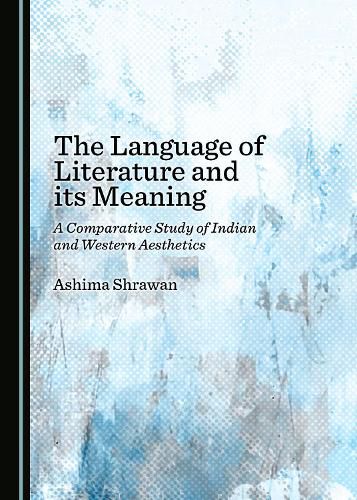Readings Newsletter
Become a Readings Member to make your shopping experience even easier.
Sign in or sign up for free!
You’re not far away from qualifying for FREE standard shipping within Australia
You’ve qualified for FREE standard shipping within Australia
The cart is loading…






There is a marked awareness about the language of literature and its meaning both in Indian and Western aesthetic thinking. The aestheticians of both schools hold that the language of literature embodies a significant aspect of human experience, and represents a creative pattern of verbal structure to impart meaning effectively.Modern Western aesthetic thinking, which includes theories like formalism, new criticism, stylistics, structuralism, post-structuralism, deconstruction, discourse analysis, semiotics and dialogic criticism, in one way or another emphasizes the study of the language of literature in order to understand its meaning. Similarly, there is a distinct focus on the language of literature and its meaning in Indian literary theories which include the theory of rasa (aesthetic experience), alamkara (the poetic figure), riti (diction), dhvani (suggestion), vakrokti (oblique expression) and aucitya (propriety). This book explores how the language of literature and its meaning have been dealt with in both Indian and Western aesthetic thinking. In doing so, the study concentrates on Kuntaka’s theory of vakrokti and Anandavardhana’s theory of dhvani in Indian aesthetic thinking and Russian formalism and deconstruction in Western thinking. The book categorically focuses on the intersection between the theory of vakrokti and Russian formalism and the meeting-point between the theory of dhvani and deconstruction.
$9.00 standard shipping within Australia
FREE standard shipping within Australia for orders over $100.00
Express & International shipping calculated at checkout
There is a marked awareness about the language of literature and its meaning both in Indian and Western aesthetic thinking. The aestheticians of both schools hold that the language of literature embodies a significant aspect of human experience, and represents a creative pattern of verbal structure to impart meaning effectively.Modern Western aesthetic thinking, which includes theories like formalism, new criticism, stylistics, structuralism, post-structuralism, deconstruction, discourse analysis, semiotics and dialogic criticism, in one way or another emphasizes the study of the language of literature in order to understand its meaning. Similarly, there is a distinct focus on the language of literature and its meaning in Indian literary theories which include the theory of rasa (aesthetic experience), alamkara (the poetic figure), riti (diction), dhvani (suggestion), vakrokti (oblique expression) and aucitya (propriety). This book explores how the language of literature and its meaning have been dealt with in both Indian and Western aesthetic thinking. In doing so, the study concentrates on Kuntaka’s theory of vakrokti and Anandavardhana’s theory of dhvani in Indian aesthetic thinking and Russian formalism and deconstruction in Western thinking. The book categorically focuses on the intersection between the theory of vakrokti and Russian formalism and the meeting-point between the theory of dhvani and deconstruction.